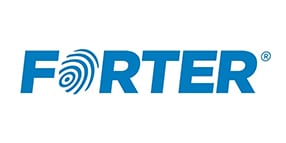
Businesses that want to maintain a competitive advantage during this time are investing heavily to understand their customers’ shopping habits, online behaviour, and preferences. Doing so enables customisation and personalisation of the shopping experience, thereby increasing conversion and revenue generation.
Today, merchants should care about how a consumer arrived at a website, their previous purchases, what items they clicked on, how much time they spent on the website, and more. Yet they often forget about their customers’ checkout preferences and what verification method will cause the least friction for them.
This is because the payment flow is seen as a necessity rather than part of the shopping experience. The payment process is not seen as something that can be personalised.
The EU’s Revised Payment Service Directive (PSD2) changes that.
How PSD2 changes checkout
PSD2 was designed to protect businesses and consumers by adding Strong Customer Authentication (SCA) to the checkout process. This is most often done through the incorporation of 3D-Secure (3DS).
However, when 3DS is added to the checkout process, the payment flow changes to include additional layers of friction that did not exist before. It changes the checkout process customers are familiar with, to something more complex and time-consuming.
The new layer of friction that 3DS adds increases cart abandonment rates, harms customer experience, and leads to a decline in revenue generation.
The additional 3DS verification customers will need to input changes the entire customer experience and makes way for further problems. When customers have to input additional information, this increases the chance of human error. Customers may find their transactions declined. The additional layer of verification may also provide customers more time to think about their purchase. This can lead them to get buyer’s remorse and abandon the purchase before completion.
If merchants want to reduce the impact PSD2 and 3DS have on their business, they need to shift their mindset. Enterprises should consider the payment flow as an integral part of the consumers’ shopping experience, and as a crucial element of their entire operation.
The need to meet customer expectations
The fact that PSD2 adds a layer of friction to the checkout process is in stark difference to consumers’ evolving payment habits and expectations.
Today, online shoppers expect a customised shopping experience, and personalisation is a crucial part of that. Businesses that want to continue to grow must recognise this and meet their customer expectations everywhere – including the payment process.
By knowing what customers expect of the checkout process, merchants will be able to adapt their payment flow accordingly. This provides customers the best possible flow that will enhance their shopping experience and facilitate the checkout. In doing so, merchants will create an ecosystem of trust, increasing customer loyalty and lifetime customer value.
For example, if a consumer is completing a checkout process on their mobile device, providing them with an SMS code as an SCA verification method can make the checkout process smooth. However, if another type of verification is sent, this may deviate from their expectation and harm their experience.
In contrast, a desktop shopper may not be near their device. As a result, they may abandon the cart if they have to get up to find their mobile device. Some shoppers may prefer guest checkout, especially for their first transaction on the site. However if a merchant does not offer it because of fear of fraud, they will lose out on the transaction. This may cause the customer to be frustrated.
Merchants need to understand that instead of expecting consumers to adapt, their role is to optimise their eCommerce businesses’ payment flow to meet evolving customers’ expectations. As PSD2 goes into effect, knowing what customers expect and meeting those expectations becomes even more critical for businesses.
Personalised payment and verification
Knowing customers’ preferred payment flow (including preferred payment method and SCA verification method) is the only way for merchants to comply with PSD2. It adds a layer of SCA, and increases their conversions and revenue generation.
By recognising the different payment and verification needs of customers, merchants can maximise revenue generation and reduce declines.
For example, some consumers may be more inclined to complete a purchase if they have a split payment method. Others may care more about seamless checkout, and may be dissuaded from a purchase if a pop-up window comes up. Knowing this could be the difference between a completed checkout and cart abandonment.
Knowing which payment method to offer and which verification method to apply becomes critical under PSD2. All merchants will need to perform 3DS on transactions in the European Union (EU) and European Economic Area (EEA). The increased use of 3DS will yield a higher decline rate, unless smart routing with dynamic 3DS is incorporated.
Personalising the payment and verification method is possible through smart routing and dynamic 3DS. With smart payment routing, artificial intelligence (AI) and behavioural analytics are applied to each transaction. This enables merchants to provide each customer with the checkout process and verification method that they prefer.
By automatically routing each transaction through the most suitable checkout process, merchants can boost revenue, while ensuring their business is safe from fraud and PSD2 compliant.
The payment world is changing
Combining a global pandemic and a large-scale regulation has led to a complete shift in the payment world. Today, consumers are overcoming their fear and turning to online shopping. Previous online shoppers are increasing their reliance on digital brands.
This creates a massive opportunity for merchants if treated the right way.
Consumers who are not experienced eCommerce shoppers are only now overcoming their hesitation. Creating a friction-full checkout process or unexplained false declines will cause them to abandon their shopping cart and the merchant.
To meet the needs of existing and new online shoppers, merchants must treat the checkout process as a crucial part of the user experience. Retailers must invest in knowing their customers preferred payment and verification methods, as well as their online shopping preferences.
By making the checkout process an extension of the personalisation process, merchants will truly know customers’ needs, behaviour, and expectations. In meeting their needs, merchants will be able to provide them with a better experience.
For merchants to offer a truly personalised customer experience and understand their customers’ preferred payment methods, they must ask the following questions:
- Do you have high cart-abandonment rates?
- Does your payment optimisation partner customise payment methods per customer?
- How does your payment partner know when to offer different verification methods?
- What solutions do you have in place to reduce checkout friction?
- Do you have insight into the checkout patterns of your customers?
In today’s competitive and digital world, rejecting legitimate transactions or scaring customers away is not an option. Having a payment optimisation partner, dynamic 3DS, and smart payment routing is the only solution to protect revenues and prevent fraud.

Forter’s integrated fraud prevention platform is powered by its rapidly growing Global Merchant Network, underpinned by predictive fraud research and modeling, and the ability for customers to tailor the platform for their specific needs. As a result, Forter is trusted by Fortune 500 companies to deliver exceptional accuracy, a smoother user experience, and elevated sales at a much lower cost.
























